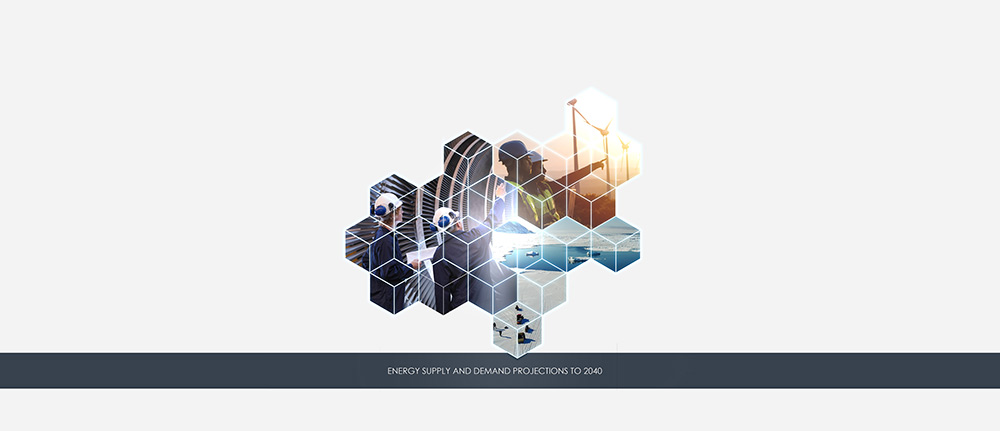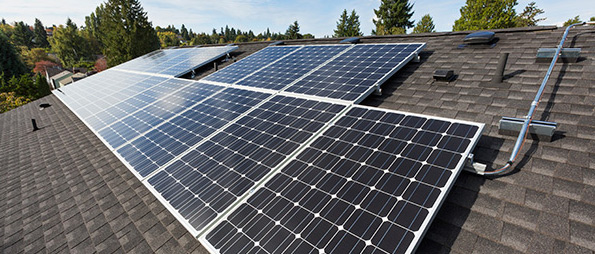Energy Information
The NEB collects, monitors, analyzes and publishes information on energy markets and supply, sources of energy,and the safety and security of pipelines and international power lines.
Our Commitment
Canadians access and use energy information for knowledge, research or decision-making.
Canadians have access to community–specific NEB–regulated infrastructure information.
Canadians have opportunities to collaborate and provide feedback on NEB information products.
The NEB plays a vital role in conveying objective and neutral information to Canadians and is at the forefront on energy markets monitoring and analysis. Staff work feeds into regulatory hearings on pipeline projects in Canada, provides analysis on important policy developments, models Canada’s energy supply and demand projections, and provides Canadians with reports and dashboards to help make informed choices on energy matters.
Energy Information Products and Reports in 2018-19:
-
 69
69
Energy information online products -
 105
105
Collaborative engagements with energy stakeholders -
 274
274
Information request responses -
 >1M
>1M
Energy Information web page views -
 50%
50%
NEB Tweets are about Energy Information
Performance Results – Energy Information
Number of times NEB energy information is accessed.
- Target 750,000
- Results
2017-18 986,347 - Results
2018-19 1,216,873
Increased information specific to National Energy Board–regulated infrastructure in communities.
- Target 5new
datasets - Results
2017-18 5 - Results
2018-19 15
Percentage of surveyed web users who agree that energy information is useful for knowledge, research or decision making.
- Target 75%
- Results
2017-18 84% - Results
2018-19 90%
Number of opportunities that Canadians have to collaborate and provide feedback on energy information products.
- Target 42
- Results
2017-18 76 - Results
2018-19 105
The NEB’s Energy Information program is instrumental in supporting energy literacy across many platforms, and in conveying the role and the work of the NEB to a broader public. We collaborate with Natural Resources Canada, Statistics Canada, academic and global policy organizations who use the NEB’s energy data, data modelling, and integrated analysis as a part of their own energy information publications.
In addition, the NEB publishes a portfolio of publications on energy supply, demand and infrastructure as part of the NEB’s ongoing market monitoring and assessment of Canadian energy requirements and trends, including:
- Canada’s Energy Future
- Provincial and Territorial Profiles
- Commodity Prices and Trade Updates
- Energy Quizzes
- Market snapshots
- Canada’s pipeline system portal – Pipeline profiles, interactive pipeline maps, and pipeline transportation system

Western Canadian Crude Oil Supply, Markets, and Pipeline Capacity and Optimizing Oil Pipeline and Rail Capacity out of Western Canada
In November 2018, the Minister of Natural Resources, The Honourable Amarjeet Sohi, wrote to the NEB to seek advice on options to further optimize pipeline capacity out of western Canada. The request, which fell within the Board’s advisory duties under Part II of the NEB Act, came as a response to the growing price differential for Canadian crude in the latter part of 2018 and its impacts on Canada. Minister Sohi requested insight on three specific questions:
- Is the current monthly nomination process to access available capacity on oil pipelines functioning appropriately, consistent with the “common carrier” provisions of the NEB Act and efficient utilization of pipeline infrastructure?
- Are there other impediments to the further optimization of pipeline capacity?
- Are there short-term steps to further maximize rail capacity?
In developing our report for the Minister, the NEB met with pipeline companies, producers, shippers, governments, other regulators and experts to seek input on the questions in the Minister’s letter, and hosted an online forum on our website.
The NEB released the background information of our response capacity to move crude oil to markets and factors that have contributed to a wider discount, e to the Minister as a public report entitled Western Canadian Crude Oil Supply, Markets, and Pipeline Capacity in December 2018. The Minister received the formal report in February 2019, and at his request, we released Optimizing Oil Pipeline and Rail Capacity out of Western Canada – Advice to the Minister of Natural Resources in March. The reports described how space is allocated on pipelines in Canada, and offered insight into the imbalance between supply anor differential, for Canadian crude oil.
Exploring Energy Futures – for Students
Through our Energy Information program, the NEB continually strives to make neutral, high-quality energy analysis and information available to all public audiences. In 2018-19, the NEB partnered with Ingenium: Canadian Museums for Science and Innovation to create a lesson plan for high school students that teaches them about energy in Canada. It is based on the NEB’s Canada’s Energy Future 2018: Energy Supply and Demand Projections to 2040 analysis and uses the Exploring Canada’s Energy Future interactive data visualization tool.
Energy System Information
The NEB studies energy systems to inform its regulatory decisions and share energy market information with the public. The scope of our energy market reporting is diverse and includes traditional oil, gas and electricity information, as well as renewable energy, the role of emerging technologies, and the links between energy, economic, social and environmental issues.
Expected Energy System Program Outcomes…
- Energy system information is useful, accurate, neutral, and reflects the diversity of relevant energy issues in Canada.
- Energy data visualizations, social media, and other tools are used to make energy system information accessible and interactive.
… so that Canadians have access to and use energy information for knowledge, research and decision making.
Percentage of stakeholders and website users surveyed who agree that NEB energy system information is useful, accurate, neutral, and reflects the diversity of relevant energy issues in Canada.
- Target 75%
- Results
2017-18 95% - Results
2018-19 90%
The number of errors in published NEB energy information identified through external queries.
- Target 0
- Results
2017-182 - Results
2018-193
Number of external queries related to NEB energy information.
- Target 100
- Results
2017-18 288 - Results
2018-19 272
Percentage change over previous years of energy information website indicators.
- Target 10% increase
- Results
2017-1830%increase - Results
2018-1918%increase
The percentage change in social media interactions related to NEB energy system information.
- Target 10%increase
- Results
2017-18 27%decrease - Results
2018-19 45%increase
Increased amount of NEB energy system information published each fiscal year through interactive visualizations.
- Result
In 2018-19, the NEB released new Import and Export Visualizations, and an updated Energy Futures Report. In addition, the NEB updated its online Condition Compliance Table and Pipeline Through-put data.
Centralizing Energy Data
There are many organizations and sources that collect and maintain national energy data, which can make finding particular types of information challenging. The NEB has collaborated with Natural Resources Canada, Environment and Climate Change Canada, and Statistics Canada on a project to centralize all national energy data in a single online space. This portal provides Canadians with a single point of access to a wide variety of statistics and measures of the country’s energy sector. The portal offers an array of information on topics such as energy production, consumption, international trade, transportation and prices.
Canadian Energy Information Portal
Pipeline Information
The NEB provides Canadians with information on pipeline including safety and environmental issues in which the public is interested.
Expected Pipeline Information Program Outcomes…
- Pipeline information is useful and up to date.
- Pipeline maps, visualizations, social media, and other tools are used to make pipeline information accessible and interactive.
… so that Canadians have access to and use energy information for knowledge, research and decision making.
Increased amount of pipeline information posted on the NEB website.
- Target 10%increase
- Results
2017-18 45%increase - Results
2018-19 44%increase
Percentage of pipeline information users surveyed who agreed that the information is useful and up to date.
- Target 75%
- Results
2017-1884% - Results
2018-1990%
Percentage change over previous years of pipeline information website indicators, to monitor web traffic specific to pipeline information.
- Target 10%increase
- Results
2017-18 16%Decrease - Results
2018-19 21%increase
Percentage change in interactions on social media related to NEB pipeline information.
- Target 10% increase
- Results
2017-1820%Decrease - Results
2018-1945%increase
Increased amount of NEB pipeline data and information published each fiscal year conveyed through interactive tools.
- Result
In 2018-19, the NEB released new Import and Export Visualizations, and an updated Energy Futures Report. In addition, the NEB updated its online Condition Compliance Table and Pipeline Through-put data.
The NEB’s Pipeline Information Program
As a regulator, the NEB collects extensive pipeline system technical information and data across all of its regulatory programs. Some of that information is not easily understood or accessible by the public. The NEB established a Pipeline Information program in 2017, and over 2018-19 staff from across the NEB collaborated to enhance and improve the content and products it offers. Pipeline Information products are focused on enhancing publicly available facts, statistics, and analysis related to the finances, safety, and lifecycle regulation of Canadian pipelines. Drawing on information from Energy Adjudication, Safety and Environmental Oversight and Energy Information, the NEB has created a pipeline information package that is easily accessible and understandable by any user, including:
- An updated and improved Interactive Pipeline Map;
- A new Safety Performance Dashboard; and,
- A more comprehensive dataset of all conditions associated with approved pipeline projects.
Feedback from Indigenous Peoples and landowners has been positive, indicating that having access to information about incidents, owners and geographical locations of pipelines is a valuable tool that enhances their ability to interact both the pipeline companies, and with the NEB as the regulator. Many more pipeline information products, designed to help Canadians understand federally regulated pipelines, are planned for the upcoming year.


